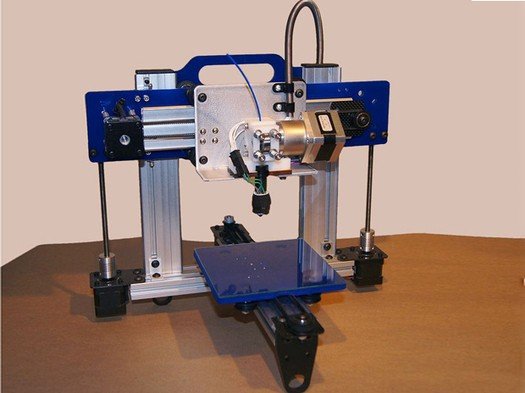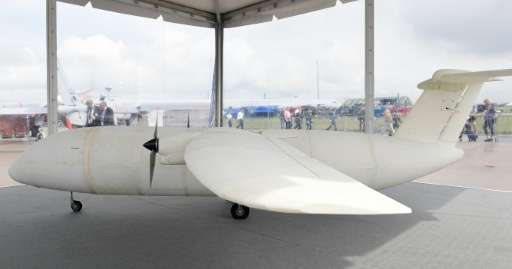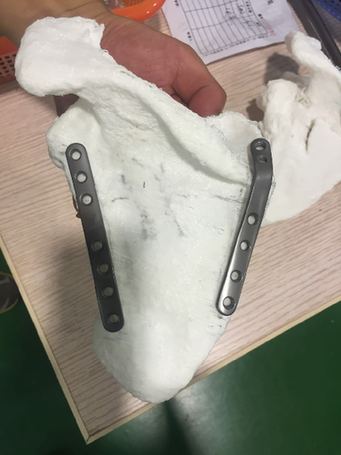


A 3-D printer. (Photo/Xinhua)
Already, 3-D printing technology has entered society and changed the way many people live. In the coming years, the impact of this advanced technology will only increase. According to a report by Digital Trends, a 3-D printing company in Poland allows blind mothers to "see" ultrasounds of their unborn babies. But what is 3-D printing? And what's next for this vital technology?
What is 3-D printing technology?
3-D printing refers to the process of successive layers of material being assembled under computer control to create a tangible, three-dimensional object. These days, 3-D printers are equipped with materials including metal, ceramic, plastic, clay and more.
Applications of 3-D printing technology

Photo shows Grecia the toucan at Zoo Ave Animal Rescue Center near Alajuela, Costa Rica. The toucan, who suffered the effects of an impaired beak for over a year, can now eat as usual thanks to its new 3-D-printed beak. (Xinhua/Kent Gilbert)
Xinhua reported on Aug. 11 that a toucan named Grecia at Zoo Ave Animal Rescue Center near Alajuela, Costa Rica, was given a 3-D-printed beak. The toucan can now eat independently using its new beak.

Photo shows Thor, the world's first 3-D-printed aircraft, being presented at a Berlin air show. (Photo/Huanqiu.com)
A report on June 6 said that the European aerospace company Airbus presented a mini-plane at a Berlin air show. The plane, christened Thor, is the world's first 3-D printed aircraft. Thor is a windowless drone that weighs 21 kilograms and is less than 4 meters in length.

Photo shows a 3-D-printed model of a bone. (Photo/Xinhua)
Guangming Daily reported on Sept. 2 that 3-D technology has also been widely used in the medical field; 3-D-printed models of organs and cells, as well as 3-D-printed artificial limbs, are being used in clinical practice.
The 3-D printing industry is developing all over the world, and making great strides in China. However, it also faces some obstacles.
Luo Jun, an expert in Chinese 3-D printing technology, pointed out that the development of the technology should really be based on application - building an open service platform, opening the application market and more.
 Fire brigade in Shanghai holds group wedding
Fire brigade in Shanghai holds group wedding Tourists enjoy ice sculptures in Datan Town, north China
Tourists enjoy ice sculptures in Datan Town, north China Sunset scenery of Dayan Pagoda in Xi'an
Sunset scenery of Dayan Pagoda in Xi'an Tourists have fun at scenic spot in Nanlong Town, NW China
Tourists have fun at scenic spot in Nanlong Town, NW China Harbin attracts tourists by making best use of ice in winter
Harbin attracts tourists by making best use of ice in winter In pics: FIS Alpine Ski Women's World Cup Slalom
In pics: FIS Alpine Ski Women's World Cup Slalom Black-necked cranes rest at reservoir in Lhunzhub County, Lhasa
Black-necked cranes rest at reservoir in Lhunzhub County, Lhasa China's FAST telescope will be available to foreign scientists in April
China's FAST telescope will be available to foreign scientists in April "She power" plays indispensable role in poverty alleviation
"She power" plays indispensable role in poverty alleviation Top 10 world news events of People's Daily in 2020
Top 10 world news events of People's Daily in 2020 Top 10 China news events of People's Daily in 2020
Top 10 China news events of People's Daily in 2020 Top 10 media buzzwords of 2020
Top 10 media buzzwords of 2020 Year-ender:10 major tourism stories of 2020
Year-ender:10 major tourism stories of 2020 No interference in Venezuelan issues
No interference in Venezuelan issues
 Biz prepares for trade spat
Biz prepares for trade spat
 Broadcasting Continent
Broadcasting Continent Australia wins Chinese CEOs as US loses
Australia wins Chinese CEOs as US loses